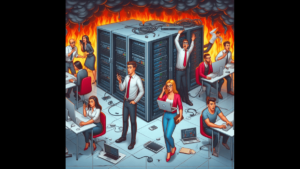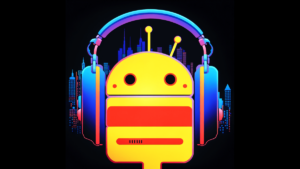
OpenAI Sora will soon become the hottest topic worldwide much like how ChatGPT hogged the limelight a couple of years ago. Open AI has done it once again which is disrupting the Artificial Intelligence world by unveiling its newest AI creation, Sora – a revolutionary text-to-video model. Sora can generate remarkably photorealistic and coherent video footage up to a minute long from simple text prompts.
How Does Sora Work?
Sora utilizes a cutting-edge diffusion model paired with a transformer architecture. This allows the AI to process more diverse video data than previous text-to-video systems. The result is the ability to produce complex, multi-shot videos that maintain visual quality, accurate physics, and cinematic flair.
How OpenAI Sora Outperforms Other Text-to-Video Models
While basic text-to-video models can generate short clips, they also often succumb to “AI weirdness” with objects behaving unnaturally. Sora stands out for its striking photorealism and its emergent grasp of cinematic storytelling. Where other systems struggle beyond 10-20 seconds, Sora can produce high-quality footage up to a minute long. Sora is capable of creating complex scenes with multiple characters, specific types of motion, and accurate details of the subject and background. The model understands not only what the user has asked for in the prompt, but also how those things exist in the physical world. Sora can also create multiple shots within a single generated video that accurately portrays characters and visual style consistently.
The Future of AI Filmmaking
Sora represents an enormous leap forward in AI-generated video. While limitations exist today, the rapid pace of progress suggests AI could soon match human filmmaking prowess. Directors may utilize AI tools to translate written stories into footage. Sora could democratize film production or enable fully automated content creation.
When will OpenAI Sora be available publicly?
Safety First – OpenAI is focused on developing Sora responsibly. They are working with red team testers to address risks and build tools to detect misleading synthetic content. Extensive testing aims to ensure this technology empowers more creators while avoiding potential harm.
What is the reaction about the first videos of OpenAI Sora?
Sora has taken X by storm one should say as the first set of videos shared by Open AI have received a thunderous response. The videos include a space movie trailer, a fluffy monster and a candle, and a gorgeously rendered papercraft world of a coral reef, rife with colorful fish and sea creatures. Sora has captured the above prompts of the professor perfectly on video which give a clear hint of what is to follow in the text-to-video arena in 2024. As one user @_Borriss put it, “It is a historic day for AI. The new text-to-video model by OpenAI Sora can generate videos indistinguishable from real ones.”
There are already cries on X that Sora will render video editors and filmmakers will soon be out jobs which is the norm when every other pathbreaking AI tool is announced. At the same time, the videos that are on display are scaringly good and will only improve every passing day. The best piece of advice is one that has been heard constantly in the past year or so “AI will not replace you but those who can harness the power of AI will”.
The Bottom Line
Sora signifies an AI milestone that points to a near-future where software plays an ever-greater role in visual media production. While human creativity will always be at the core, systems like Sora may profoundly augment what we can achieve. One thing is certain – the pace of progress ensures that AI will reshape filmmaking in the years ahead. Open AI Sora stuns filmmakers with photorealistic text-to-video like never before




